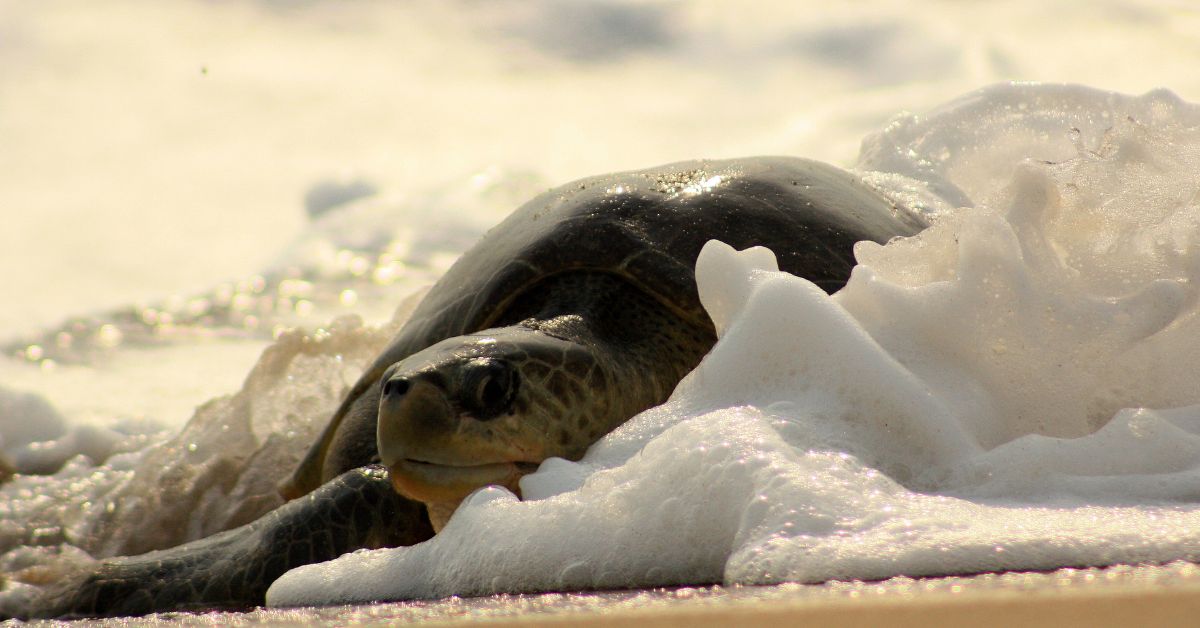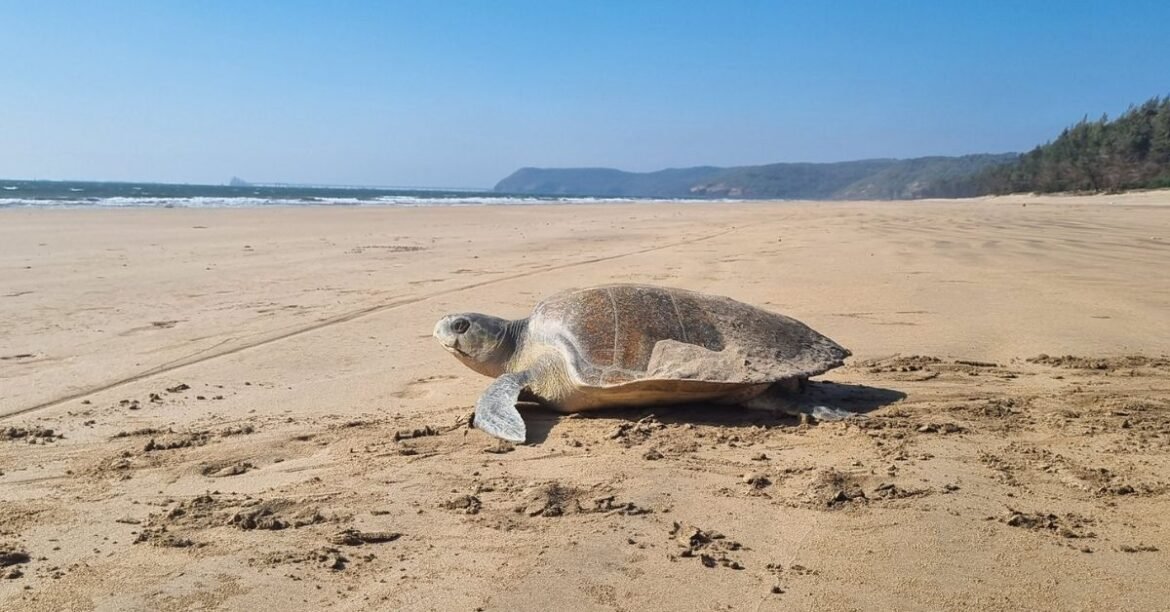In an awe-inspiring movement for conservationists and turtle lovers, an Olive Ridley sea turtle tagged as ‘03233’ has accomplished a remarkable migration, swimming over 3,500 kilometres from Odisha’s Rushikulya beach to Maharashtra’s Ratnagiri coast with its flippers.
This unprecedented journey, tracked by the Zoological Survey of India (ZSI), marks the first confirmed instance of an Olive Ridley nesting on both the eastern and western shores of India.
Originally tagged during the 2021-22 nesting season, turtle 03233’s voyage across two ocean basins has astonished researchers and conservationists alike. IAS officer Supriya Sahu shared this groundbreaking discovery on social media, emphasising its significance for marine conservation strategies.
This extraordinary migration challenges long-held beliefs about Olive Ridley nesting behaviours, suggesting a previously unknown flexibility in their choice of nesting sites, and that it only returns to its birthing site for nesting.
The implications are profound, prompting a reevaluation of existing conservation models. As climate change continues to impact marine ecosystems, understanding such migration patterns becomes crucial for developing adaptive conservation strategies.
What makes this journey even more significant is the message it carries for conservation efforts, particularly in Tamil Nadu. Sahu noted that this movement offers important takeaways for Tamil Nadu’s conservationists, especially as the state continues to strengthen its coastal protection programmes via voluntary organisations.

The turtle’s inter-coastal journey highlights the need for a pan-India approach to marine conservation, where states share data, collaborate, and anticipate shifts in nesting grounds driven by climate or ocean changes.
The Olive Ridley’s epic swim is a nudge to deepen scientific inquiry and widen our protective gaze. It reinforces the need for long-term tracking, habitat preservation, and community engagement to protect these gentle navigators across India.
As turtle 03233 glides through the vast waters, it reminds us that the ocean connects more than just coasts — it connects people, policies, and the future of our planet’s biodiversity.
Edited by Vidya Gowri Venkatesh; Post courtesy Supriya Sahu


